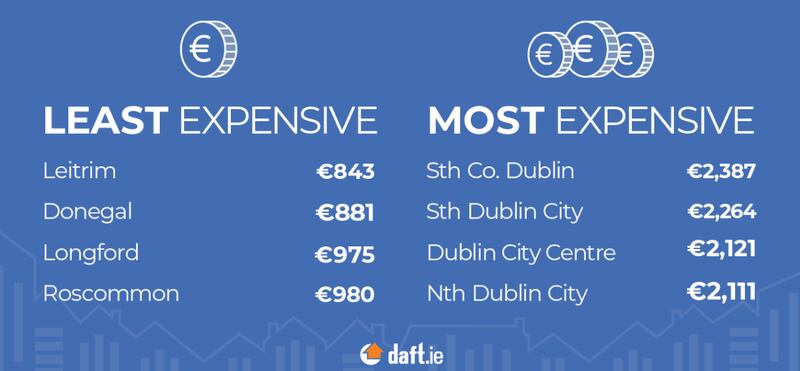Rents soared by the fastest rate on record in the second quarter of this year as the availability of rental homes reached an all-time low, according to a new report by property group Daft.ie.
It shows that the average market rent nationwide between April and June was €1,618 per month, up 3.3 per cent on the first three months of the year and more than double the low of €765 per month seen in late 2011.
It is also 12.6 per cent higher than the figure a year previously – the highest annual rate of inflation in rents recorded by Daft.ie since it launched its regular rental market reports in 2006, surpassing the previous peak of 11.8 per cent in late 2016.
Sinn Féin housing spokesman Eoin Ó Broin said the report showed the Government had “lost control” of the housing market, and suggested the budget in September would be its “last chance” to fix a “deepening” crisis.
RM Block
Dublin rents were up 12.7 per cent on a year earlier, and above the national average for the first time since 2018. In Cork city, the annual change in market rents was 11.8 per cent.

Main cities
The rate of inflation in the three other principal cities – Galway, Limerick and Waterford – was higher, ranging from 16.4 per cent in Galway to 17.7 per cent in Limerick. Outside the cities, the average annual increase in market rents was 12 per cent, the report published on Wednesday states
As has been consistently the case over much of the past decade, the increase in market rents around the State was driven by a further tightening in availability of properties. Daft.ie said the scarcity of rental homes over the past year had been “unprecedented”.
Nationwide, there were just 716 homes available to rent on August 1st, down from almost 2,500 a year ago and another new all-time low in a series that extends back to 2006. Compared to 2009, rental availability has fallen by 97 per cent nationwide.
The report includes an analysis of 75 multi-unit rental developments, which are estimated to have added almost 1,000 new rental homes in the last nine months, or roughly 25 new homes per week. Of the 7,500 homes in these developments, almost 95 per cent are estimated to be occupied, based on publicly available information.
Also in the report is an analysis of figures provided by Cortland Consult on the pipeline of new rental homes. Over the past year, the pipeline has increased by approximately 23,000, representing an increase of 13,000 under construction and 28,000 for which a planning application has been submitted – as well as a decrease of 17,500 at pre-planning stage.

‘Chronic shortage’
The stock of rental homes for which planning has been granted but which have yet to start construction remains steady at 43,000.
Ronan Lyons, associate professor of economics at Trinity College Dublin and author of the report, said the resurgence of the economy over the past year has “accentuated the chronic shortage of rental housing”.
“While the professional rental sector has added more than 7,000 new rental homes in the last five years, this is small relative to the fall of 30,000 in rental listings each year in the traditional rental sector in the same period or the fall of 100,000 listings per year since 2012,” he said.
“Further, while nearly 23,000 are under construction, the remainder are earlier in the process and the growth of legal challenges to new developments presents a threat to addressing the rental scarcity.”
Focus Ireland said it was calling for “urgent government action” to help stop the “exodus of landlords” from the private rental market.
“In the first half of 2022, the number of eviction notices jumped by 58 per cent, compared with the latter half of 2021,” it said. “Focus Ireland said the published data show that the biggest rise in evictions is due to landlords selling their property.”



















